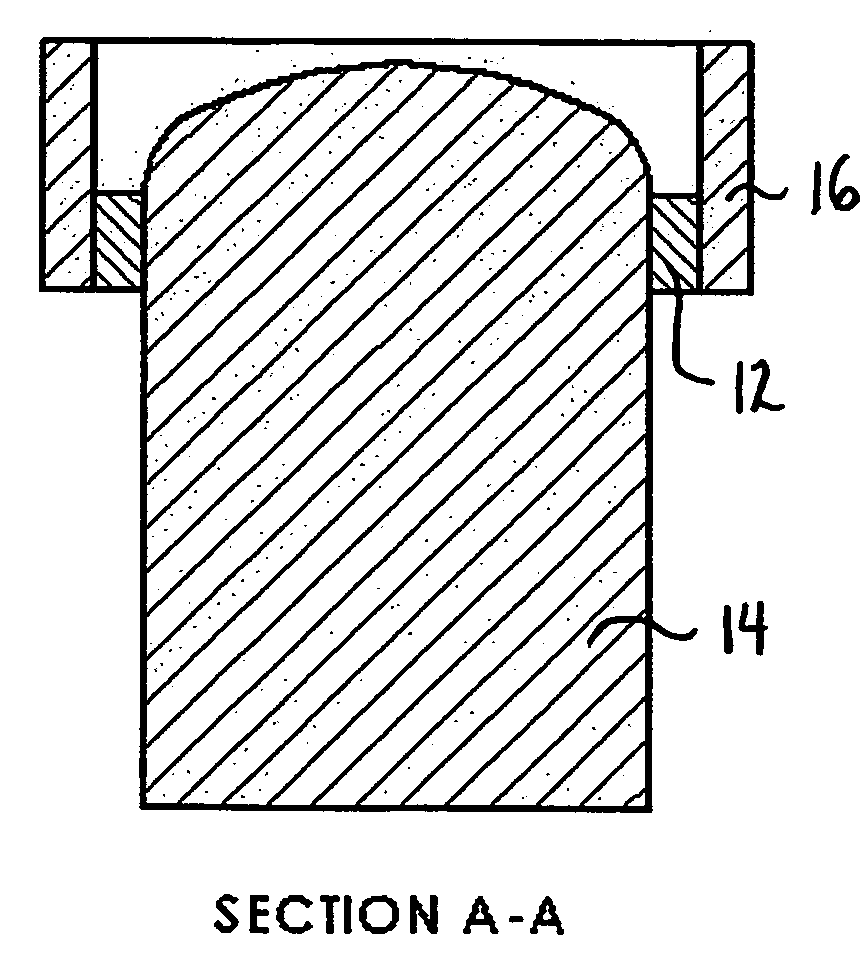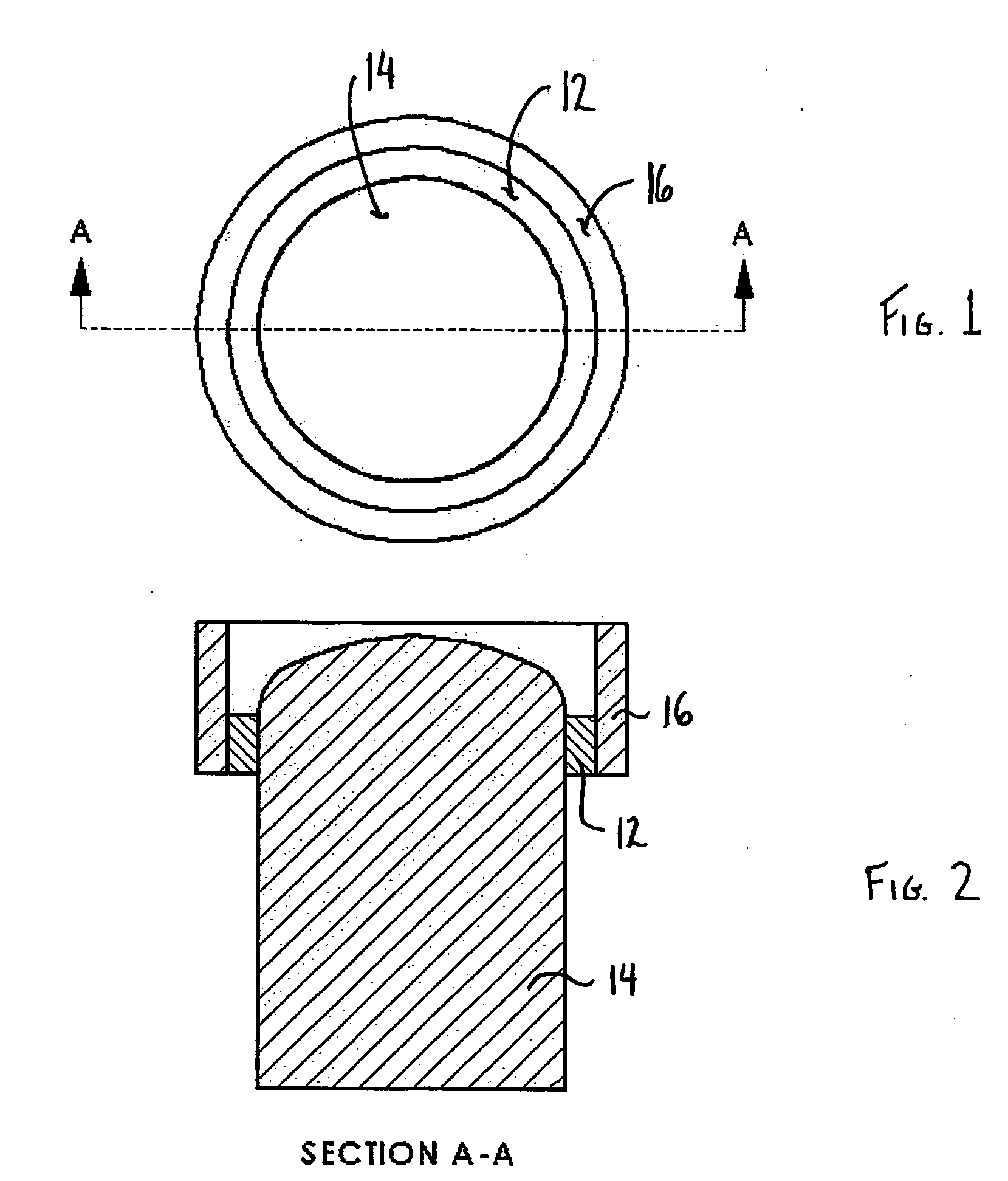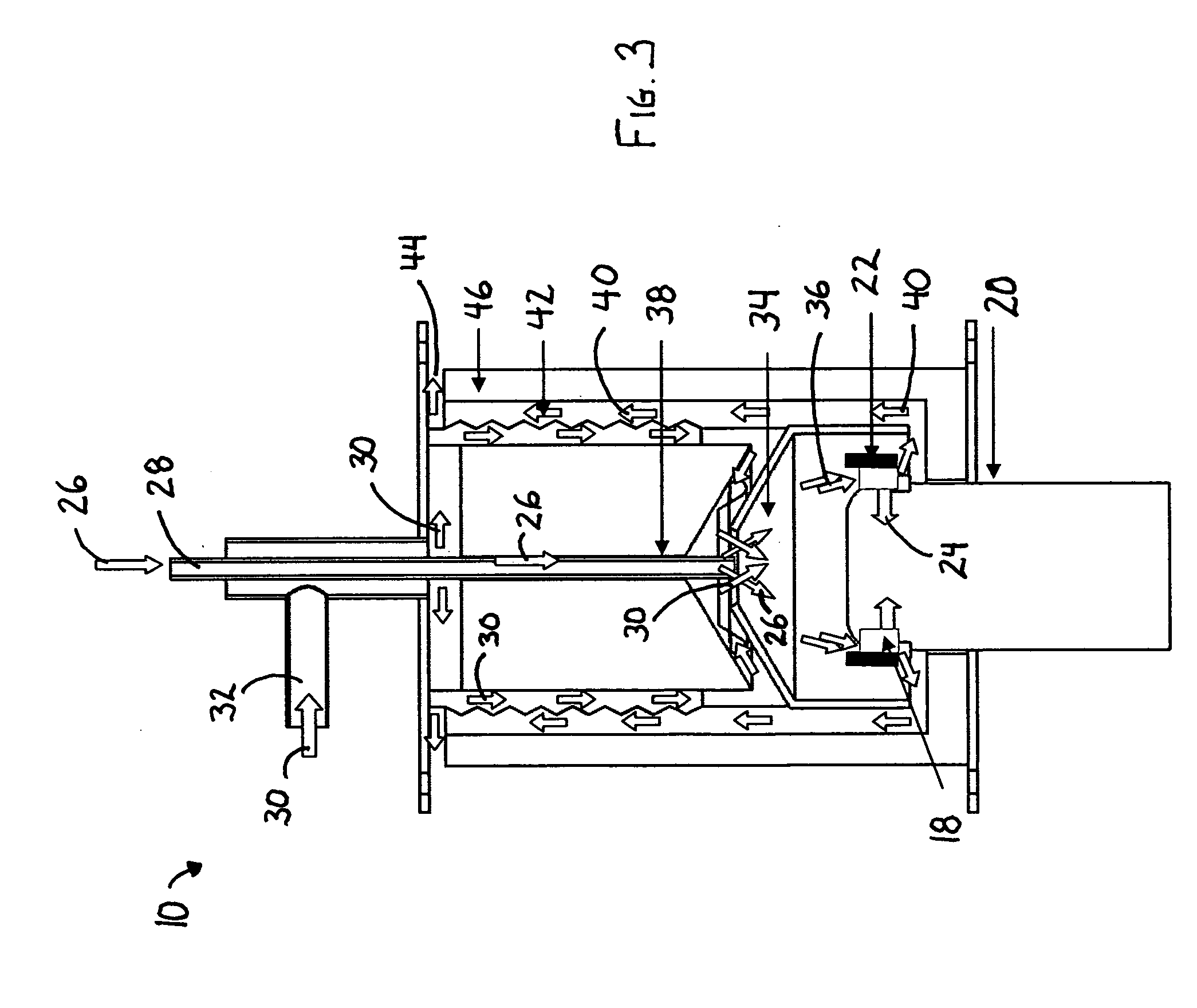Catalytic burner for stirling engine
a technology of catalytic burner and stirling engine, which is applied in the direction of catalytic material combustion, combustion types, lighting and heating apparatus, etc. it can solve the problems of enhancing requiring an external heat source to operate, and still exist in the art relating to the enhancement of the efficiency of the operation of the stirling engine. achieve the effect of simple, efficient and effective heat generation
- Summary
- Abstract
- Description
- Claims
- Application Information
AI Technical Summary
Benefits of technology
Problems solved by technology
Method used
Image
Examples
Embodiment Construction
[0026]As shown in FIGS. 1 and 2 and generally referred to as heat conduction method 10 in FIG. 3, catalytic reactor 12 is positioned in communication with heater head 14, and rigidly held in place by catalyst holder 16. Catalytic reactor 12 comprises catalyst deposited on Microlith® ultra-short-channel-length metal mesh elements. The reactor provides heat transfer to heater head 14 by thermal conduction. Catalyst holder 16 also serves as a heat exchanger with respect to the heat generated by the catalytic reactor 12 and transferred to the gases passing over and in proximity to catalyst holder 16.
[0027]As depicted in FIGS. 2 and 3, heat conduction method 10 comprises a catalytic reactor 18 positioned in communication with Stirling Engine heater head 20, and held in place by catalyst holder 22. Catalytic reactor 18 provides heat transfer to heater head 20 by thermal conduction 24 through internal heat acceptor 25. In the embodiment of the invention depicted, fuel 26 is introduced via ...
PUM
 Login to View More
Login to View More Abstract
Description
Claims
Application Information
 Login to View More
Login to View More - R&D
- Intellectual Property
- Life Sciences
- Materials
- Tech Scout
- Unparalleled Data Quality
- Higher Quality Content
- 60% Fewer Hallucinations
Browse by: Latest US Patents, China's latest patents, Technical Efficacy Thesaurus, Application Domain, Technology Topic, Popular Technical Reports.
© 2025 PatSnap. All rights reserved.Legal|Privacy policy|Modern Slavery Act Transparency Statement|Sitemap|About US| Contact US: help@patsnap.com



